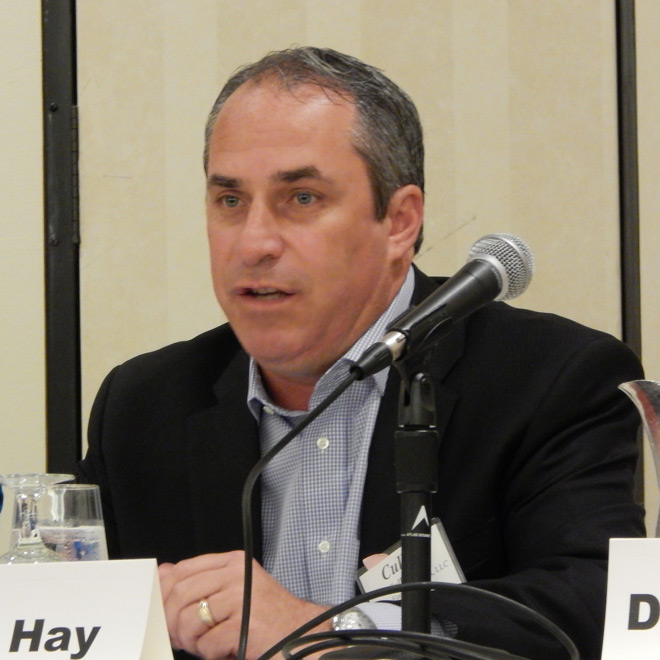By Rich Heidorn Jr.
GROTON, Conn. — Electric retailers have made progress in moving away from the cutthroat price competition that shaved margins, but restrictions on billing and metering and “organizational inertia” continue to be challenges, a panel told the New England Energy Conference and Exposition last week.

“We all kind of lived under the same mantra that as one customer came in the front door, one customer would walk out the back door,” he said.
Over the last three years, however, electric retailers have begun to increase their customer engagement by offering additional services such as home warranties and rooftop solar, he said. “These are not gimmicks. These are the value-added things that the telecom industry found successful when they were handed a deregulated market,” he said.
“The new wave of the industry is knowledge …. Our mission statement is getting our consumers the information they need to make really intelligent decisions. And that goes with consumption-reduction tools like [the] Nest [thermostat] and online portals that allows them to see what their consumption looks like, what their community’s consumption patterns look like” to identify inefficient appliances and make informed decisions.
“That’s the retail, residential industry in the next five years. And it’s already happening.”
Progress, Challenges in Pursuit of C&I Customers
High capacity and transmission costs in regions such as PJM and New England are leading more commercial and industrial customers to welcome companies offering to improve efficiency in return for a share of the cost savings, said Dean Musser, CEO of Tangent Energy Solutions.
“The power customers [are] out there pushing and pushing for ways to innovate. And it’s up to us in this industry to capture that innovation,” he said.
Michael Volpe, who heads SunEdison’s distributed generation business in PJM, said electric retailers could be doing better among C&I customers if not for “organizational inertia.”
“In my experience most energy buyers have a lot of technical acumen but are hesitant to pursue things that they may perceive to be risky due to the long-term nature” of the payback, he said.
The choice, he said, is “getting into the offices of the CFO and sharing how the energy opportunity set has broadened [or] giving the power [to lower-ranking employees] to promote it up” the corporate chain.
Smart Grid Unfulfilled
Musser said the industry and its customers are not getting the full benefits of the billions invested in smart meters.
Philadelphia’s PECO Energy has smart meters for every C&I customer, he said. “But the data is not available until a day later. And if you want a pulse to get the data right away, [it costs] $1,800 and it’s going to take six months.
“That little pulse is two wires coming out of the meter that will enable this … customer to have real-time data every 15 minutes so they can see their consumption and take advantage of all the new products. … But if you’re looking at it a day late that doesn’t help at all.
“Some utilities are adopting methods where there’s free pulses now to get customer adoption. But across the U.S. it’s all over the board for what it costs and how long it takes to get a pulse out of a utility meter,” he said.
Itemized Bills
Hay said limits on itemized bills also are hurting efforts to educate customers about the value of options available to them.
“Customers may not read direct mail pieces and they may not read their email. But they will look at their bill,” he said. “We are limited to the number of line items we have and the amount of information a supplier like us [can provide]. A more engaged customer is going to be interested in the whole product catalog. We have to find a way to give them that information.”
Because of those limitations, Hay said, his company would like to be the ones sending the bills instead of the distribution utility.
“We are pushing for supplier-consolidated billing with any utility in the U.S. market that will allow us to do so. We are pushing it as part of the [New York] REV program.
“It’s going to have costs associated with it, but we’re prepared to bear those costs. I believe that the impact to churn and the impact to customer attrition that comes from us not having that direct relationship will far exceed whatever cost structure we have to take on.”


